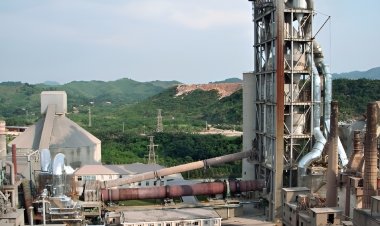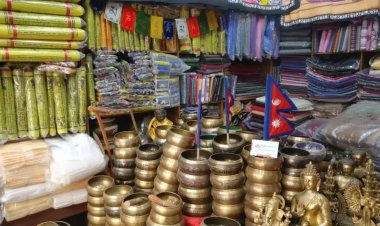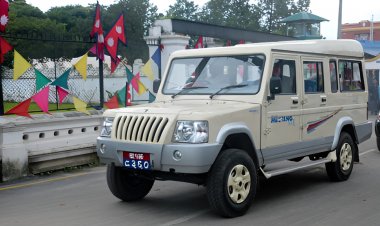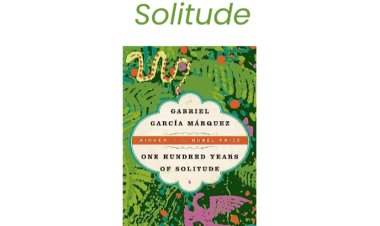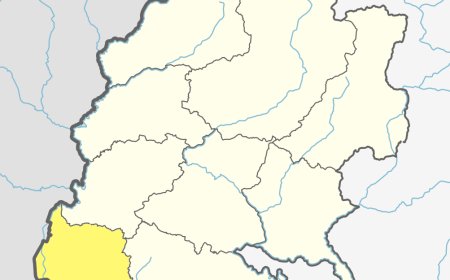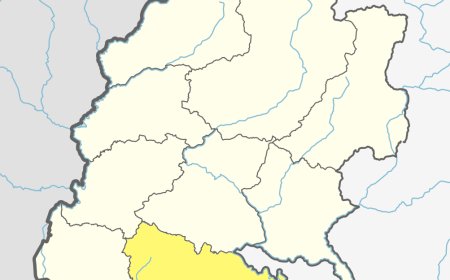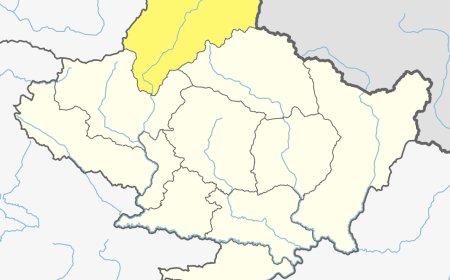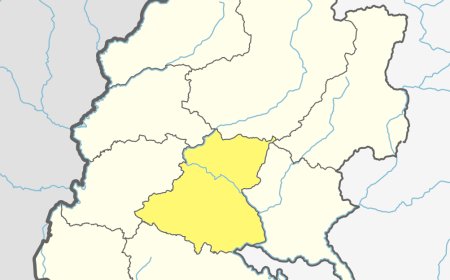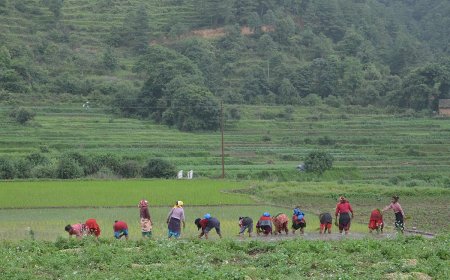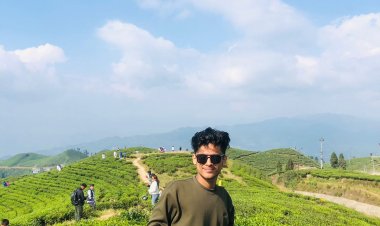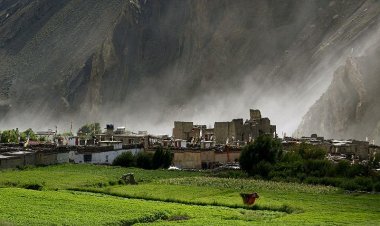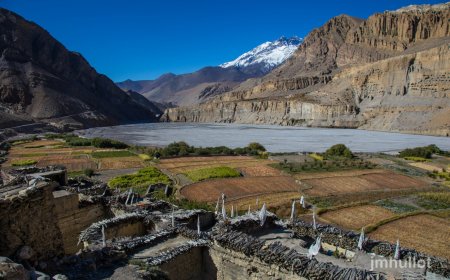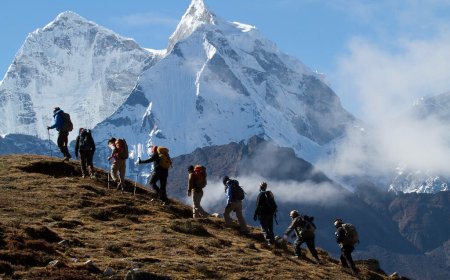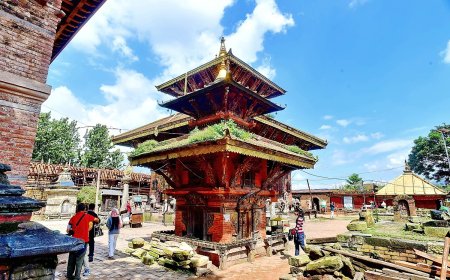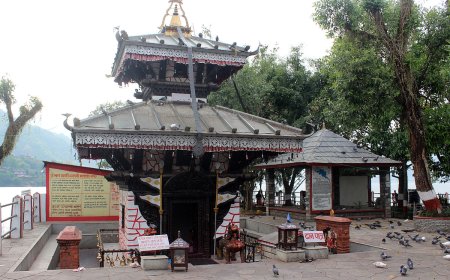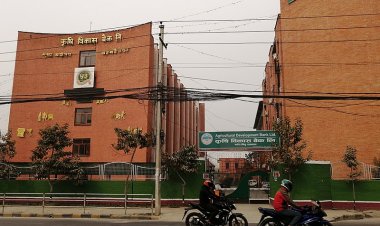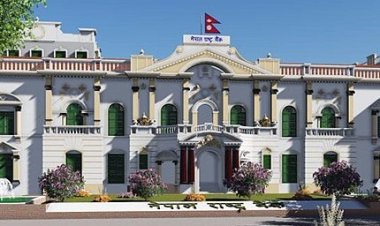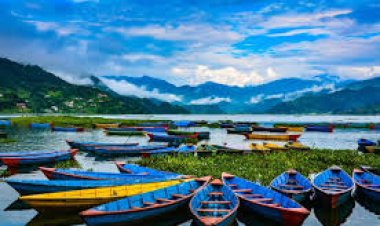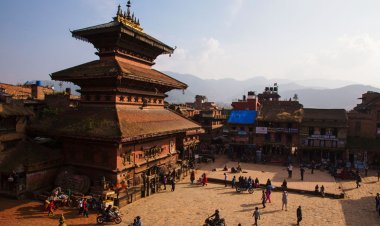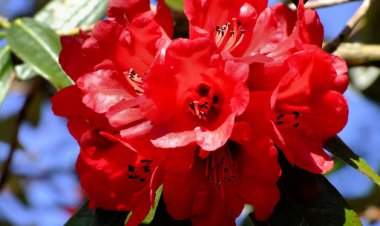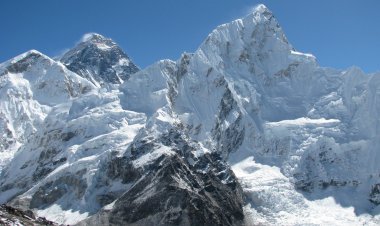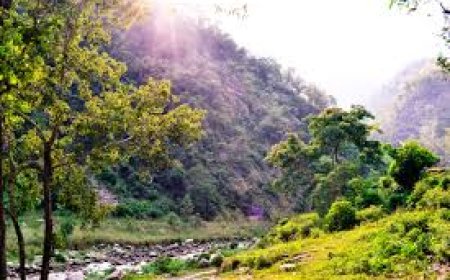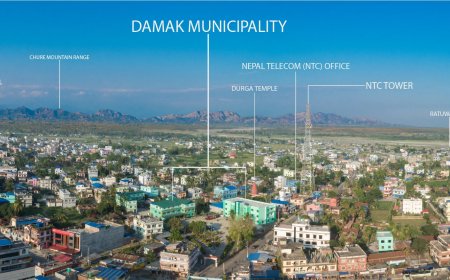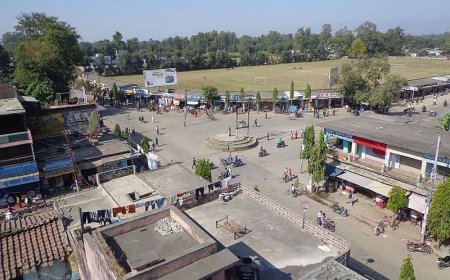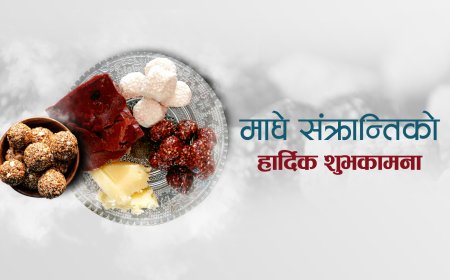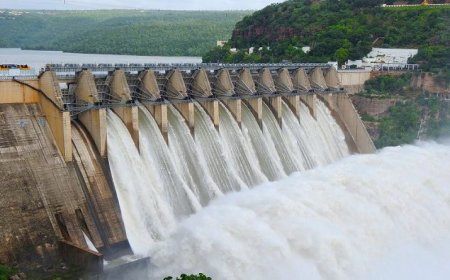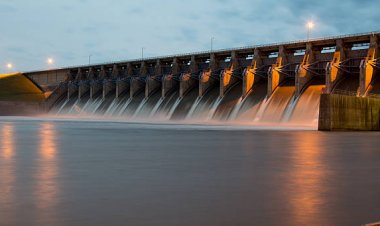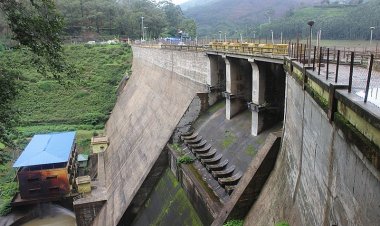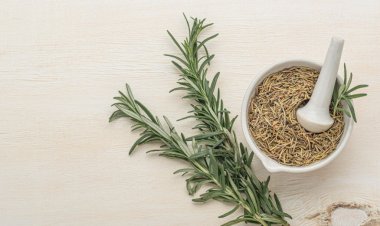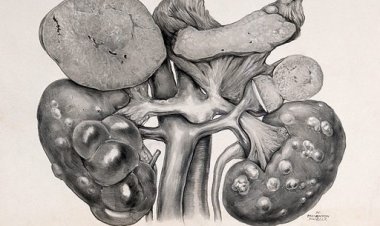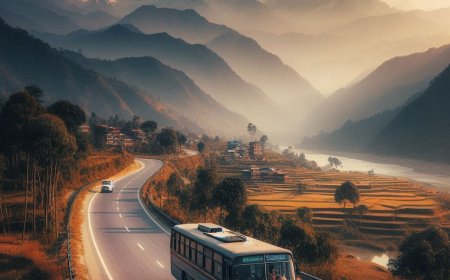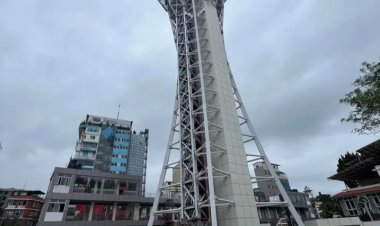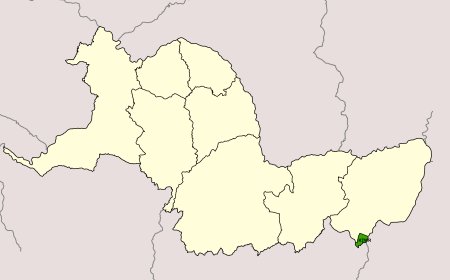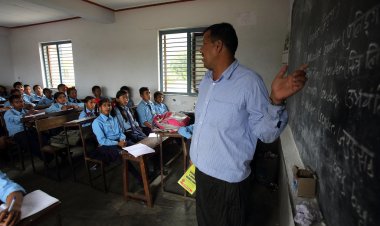Dailekh: Explore the Historic and Scenic Heart of Karnali
Let’s explore Dailekh for ancient temples, beautiful valleys, and its rich cultural history, located in the Karnali region of Nepal.
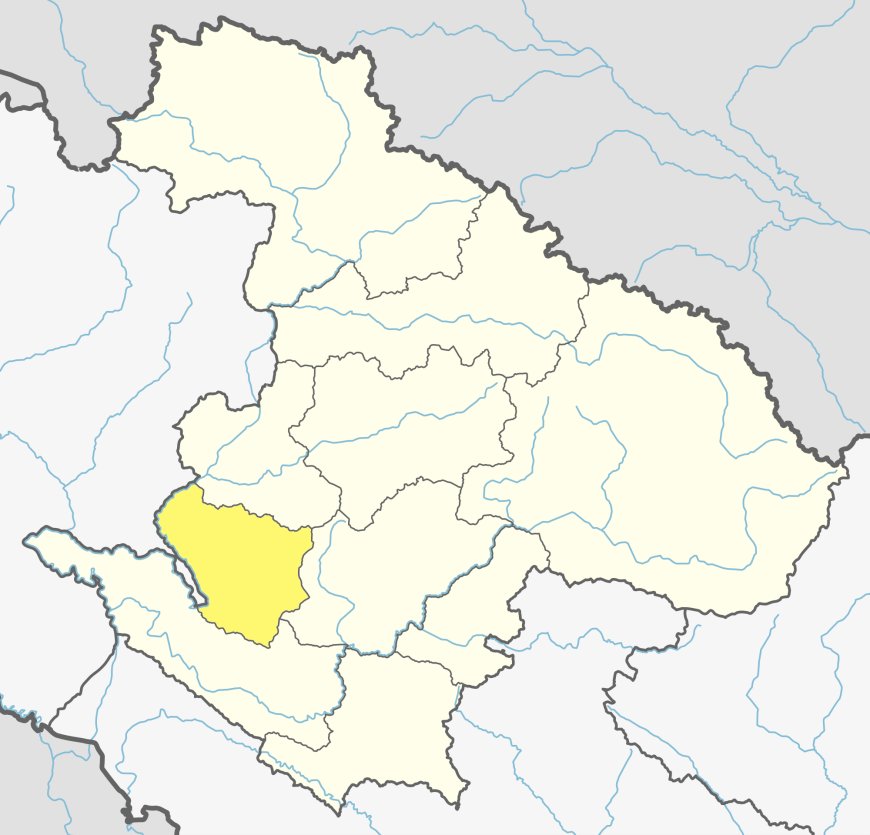
Introduction

Dailekh is a beautiful district in the mid-western region of Nepal, known for its stunning natural beauty, rich cultural heritage, and historical significance. Located in Karnali Province, this district serves as a gateway to the captivating landscapes of western Nepal. The district combines rolling hills, ancient settlements, and beautiful traditions, offering a unique experience for travelers, nature enthusiasts, and history buffs alike. With its serene environment, friendly locals, and untouched charm, this district is a destination waiting to be explored.
Geographical Overview
Covering an area of 1,502 square kilometers, this district is characterized by diverse topography, including terraced hills, lush valleys, and winding rivers. The district’s elevation ranges from 544 meters to 4,168 meters, creating a range of climatic conditions that support varied ecosystems. Dailekh is traversed by the Karnali River and its tributaries, making it a vital source of water for the region.
The climate in this district varies from subtropical in the lower regions to temperate and alpine in the higher altitudes. This diversity allows for rich biodiversity and thriving agriculture.
Table: Geographical Features
|
Feature |
Data |
|
Total Area (sq. km) |
1,502 |
|
Altitude Range (m) |
544–4,168 |
|
Major Rivers |
Karnali, Lohore, Tila |
|
Climatic Conditions |
Subtropical to Alpine |
Demographics
This district is home to a population of approximately 260,000 people, consisting of various ethnic and cultural groups. The Khas community, including Brahmins and Chhetris, forms the majority, followed by Magars, Thakuris, and Dalits. Nepali is the primary language spoken, with regional dialects adding to the linguistic richness of the district.
Traditional festivals and rituals are deeply embedded in the daily lives of the people, showcasing the district’s vibrant culture and diversity.
Table: Ethnic Composition
|
Ethnic Group |
Percentage (%) |
|
Khas |
60% |
|
Magar |
15% |
|
Thakuri |
10% |
|
Dalit |
15% |
Cultural and Historical Significance
This district shows a rich cultural and historical heritage, with landmarks that tell the stories of Nepal’s past. The district is renowned for Dullu, an ancient capital of the Sinja Valley civilization, which played a pivotal role in the development of the Nepali language and culture.
Religious sites such as the Navisthan Temple and Bhagwati Temple attract pilgrims and tourists. Festivals like Dashain, Tihar, and Maghe Sankranti are celebrated with great enthusiasm, reflecting the district’s cultural vibrancy.
Table: Key Festivals
|
Festival |
Month |
Significance |
|
Dashain |
October |
Hindu festival celebrating victory |
|
Tihar |
November |
Festival of lights and worship |
|
Maghe Sankranti |
January |
Harvest festival marking the winter solstice |
Major Attractions and Activities
This district offers a variety of attractions and activities for visitors, making it an ideal destination for those seeking cultural, historical, and natural experiences. The historic town of Dullu, once a major cultural hub, features ancient inscriptions and temples that provide insight into Nepal’s medieval history.
Another highlight is the Karnali River, a haven for adventure enthusiasts who enjoy white-water rafting and fishing. The district’s beautiful hills and terraced farms provide picturesque settings for hiking and nature walks.
Table: Major Attractions
|
Attraction |
Location |
Highlight |
|
Dullu Town |
Central Part |
Historic inscriptions and temples |
|
Karnali River |
Across the district |
White-water rafting and scenic views |
|
Navisthan Temple |
Western Part |
Sacred site with ancient significance |
|
Dailekh Hot Springs |
Northern Part |
Natural hot springs for relaxation |
Economic Overview
Agriculture is the backbone of this district’s economy, with crops such as maize, wheat, millet, and barley being cultivated extensively. In recent years, ginger farming has emerged as a lucrative sector, boosting the district’s economic prospects.
The district is also known for its traditional crafts, including wool weaving and blacksmithing, which not only contribute to the local economy but also preserve cultural traditions. Tourism is an emerging sector, driven by the district’s historical landmarks and natural attractions.
Table: Economic Highlights
|
Sector |
Contribution |
|
Agriculture |
Maize, wheat, millet, barley, and ginger |
|
Tourism |
Historic sites, Karnali River, trekking |
|
Traditional Crafts |
Wool weaving, blacksmithing |
Conclusion
Dailekh is a hidden gem that seamlessly blends natural beauty, cultural richness, and historical importance. From the ancient town of Dullu to the adventurous Karnali River, this district offers something for everyone. Its lush landscapes, warm hospitality, and deep-rooted traditions make it a destination worth exploring.
Whether you are drawn by its historical significance, beauty, or vibrant culture, the district promises a memorable experience. As an emerging ecotourism destination, it is poised to captivate visitors while preserving its natural and cultural treasures for generations to come.
Frequently Asked Questions (FAQs)
-
Where is Dailekh located?
Dailekh is situated in Karnali Province in mid-western Nepal.
-
What is Dailekh known for?
The district is famous for its historical town of Dullu, Karnali River, and traditional crafts.
-
Which rivers flow through Dailekh?
The Karnali, Lohore, and Tila rivers are the major rivers in Dailekh.
-
What is the dominant ethnic group in Dailekh?
The Khas community forms the largest ethnic group in Dailekh.
-
What are the major crops grown in Dailekh?
Maize, wheat, millet, barley, and ginger are the primary crops.
-
What is the best time to visit Dailekh?
Spring (March to May) and autumn (September to November) are the best seasons to visit Dailekh.
-
What cultural festival is significant in Dailekh?
Maghe Sankranti is celebrated with great enthusiasm in Dailekh.
-
What is special about Dullu?
Dullu is an ancient town with historical inscriptions and temples.
-
Why is the Karnali River significant?
The Karnali River is ideal for white-water rafting and is a lifeline for the region.
What's Your Reaction?































